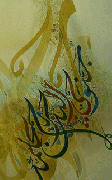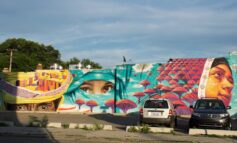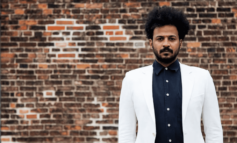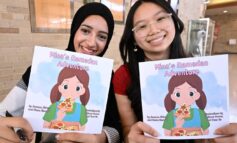Quebec, Canada – Syrian calligrapher Khaled al-Saa’i discussed Arabic calligraphy at a lecture held Nov. 11 at the Galérie Montcalm in Gatineau, Quebec.

|
The same poetic verse (“wounding a dead man does not torment”) written in the eight basic types of Arabic calligraphy by Khaled al-Saa’i. From top to bottom: Riq’a, Ta’leeq, Dywani, Naskh, Dywani Jaly, Thulth, Maghrebi, Kufi. |
Arabic calligraphy is often highly decorative. Islamic art has tended to shy away from depicting human and animal forms for fear of idolatry, so artistic creativity often took the form of architecture and calligraphy.
Al-Saa’i described Tulth as the oldest style, a highly complex form lacking spontaneity. It was used for mosque decorations and for surah headings in the Qu’ran. Riq’a is a modern style, often used in everyday writing and frequently in book titles. Ta’leeq is a Persian script from the 9th Century. Dywani is a highly decorative form developed in the 16th and 17th Centuries, and Dywani Jaly is a derivative form, perhaps the most beautiful Arabic script. The Ottoman sultans used it for their communications.

|
| Calligraphic artwork by Khaled al-Saa’i |

|
|
Khaled al-Saa’i |
While all of these styles can be very rich in form and have been colorfully produced, modern Arabic calligraphy today has created styles that are art forms submerging the calligraphic element into something resembling various Western styles.
In al-Saa’i’s original creations, the actual letters are often not apparent, especially to one unfamiliar with the language. Rather, his works resemble abstract creations. They burst with color and energy. In Western art, one finds similarities to futurism, though his work is less obviously suggestive of forms. One is also reminded of Kandinsky and the Bleue Reiter school and of the abstractionist Viera da Silva.






Leave a Reply